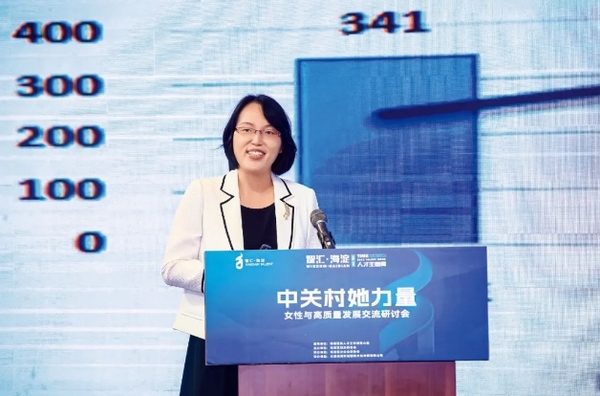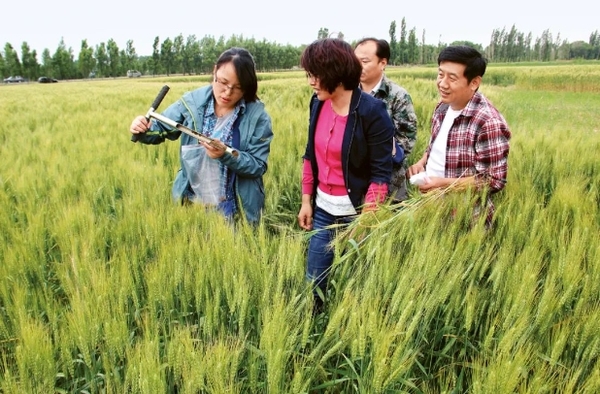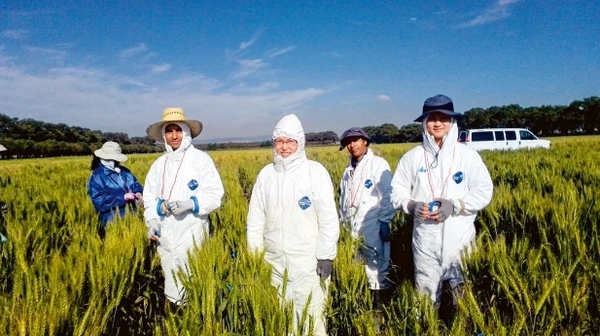Protecting Nation's Wheat Production

Gao Li is a researcher with the Institute of Plant Protection, under the Chinese Academy of Agricultural Sciences (CAAS). For the past 16 years, Gao has researched the causes of and comprehensive system for managing wheat diseases. Her research has achieved important results, and it has resulted in significant contributions to ensuring China's food security.
Gao's hometown, a rural area near Xi'an, capital of northwest China's Shaanxi Province, has a long history of farming. Gao learned to farm at an early age. When she studied in primary school, the wheat in her hometown often suffered from diseases. Gao still remembers clearly the "troubled looks" on the villagers' faces as they worried about their harvests.
After she completed gaokao (China's national college-entrance examination), Gao submitted her application to study plant protection at Northwest Agriculture and Forestry University. "I chose agriculture as my major because I grew up in the countryside. Studying agricultural sciences would enable me to prevent and treat diseases of crops. I hoped to help my fellow villagers live happy, prosperous lives through farming," says Gao.
After she obtained her Ph.D., in 2007, Gao began working in the nation's key lab (under the Institute of Plant Protection) for the comprehensive control of plant pests and diseases. Her research team focused on two concerns: Control of wheat rust and wheat bunt and smut.
Wheat rust, caused by obligate biotrophic pathogens, often occurs in a wide region, and it causes huge yield losses in China. During the first four years of her work, Gao spent most of her time studying wheat rust. She developed a technology that quickly and precisely determines — at an early stage — three types of wheat rust.
Wheat bunt and smut can result in a 75-90 percent reduction in yield. People and animals can be poisoned if they eat food made from wheat infected by wheat smut.
Gao and her team have achieved fruitful results in their wheat bunt and smut research. In fact, their research has provided theoretic and technical support to wheat production.

Helping Farmers
Gao often receives samples of diseased plants in the mail, some in envelopes and others in sacks. "I know many farmers and agricultural technicians. They send the samples to me, as they want me to detect the diseases of their plants," she says.
Gao always detects the plant samples as soon as possible, and she usually provides disease-management advice to the farmers.
Gao and her team work in wheat fields for nearly six months of the year. The harvest season is a good time to research wheat diseases. The researchers' skin, after lengthy exposure to the elements, often peels after the hot harvest season.
Gao and her team work hard to ensure they achieve innovation. They have stocked up on chemicals and studied technical methods to deal with outbreaks of wheat diseases.
In May 2022, Gao was named one of the "Most Beautiful Scientific and Technological Workers in Beijing." During a livestream event, to share stories of outstanding scientific and technological workers, some farmers in northwest China's Xinjiang Uygur Autonomous Region participated in a video call with Gao. They expressed their gratitude for her work.

Striving Hard
Gao was once interviewed by a fashion magazine. She said it would be good for women readers to see a woman scientist in the magazine. She hoped the interview would help women feel confident enough to engage in scientific research.
Gao always finds ways to inspire herself to keep striving, and to keep exploring. Each weekend, she spends at least one day working in the lab. As a mother of two, she does her best to balance work and family.
Gao cultivates her students based on their abilities. She believes assigning her students to research certain topics will help them improve their research capabilities, and will lay the solid foundation for their independent research in the future. "I hope they will give full play to their own advantages. As long as they are diligent, they will achieve some results in research," Gao says.
Gao's team has taken the lead, globally, in the research of wheat bunt and smut. Gao, as the first or corresponding author, has published more than 50 SCI (Science Citation Index) papers in major international journals.
Gao has obtained 23 national invention patent authorizations, and she was in charge of or participated in the compilation of more than 10 books. She has helped formulate and/or revise several national and/or industrial standards for disease testing and investigations. Gao has also been invited to give reports during several national and international academic events.
Given her outstanding achievements, Gao, in 2017, won the Chinese Young Women in Science Award. She has been named a woman pacesetter for making achievements, at the national level, and a National March 8th Red-Banner Holder.
Photos from Interviewee
(Women of China English Monthly March 2024)
Please understand that womenofchina.cn,a non-profit, information-communication website, cannot reach every writer before using articles and images. For copyright issues, please contact us by emailing: website@womenofchina.cn. The articles published and opinions expressed on this website represent the opinions of writers and are not necessarily shared by womenofchina.cn.?

 京公綱安備 11010102004314號
京公綱安備 11010102004314號